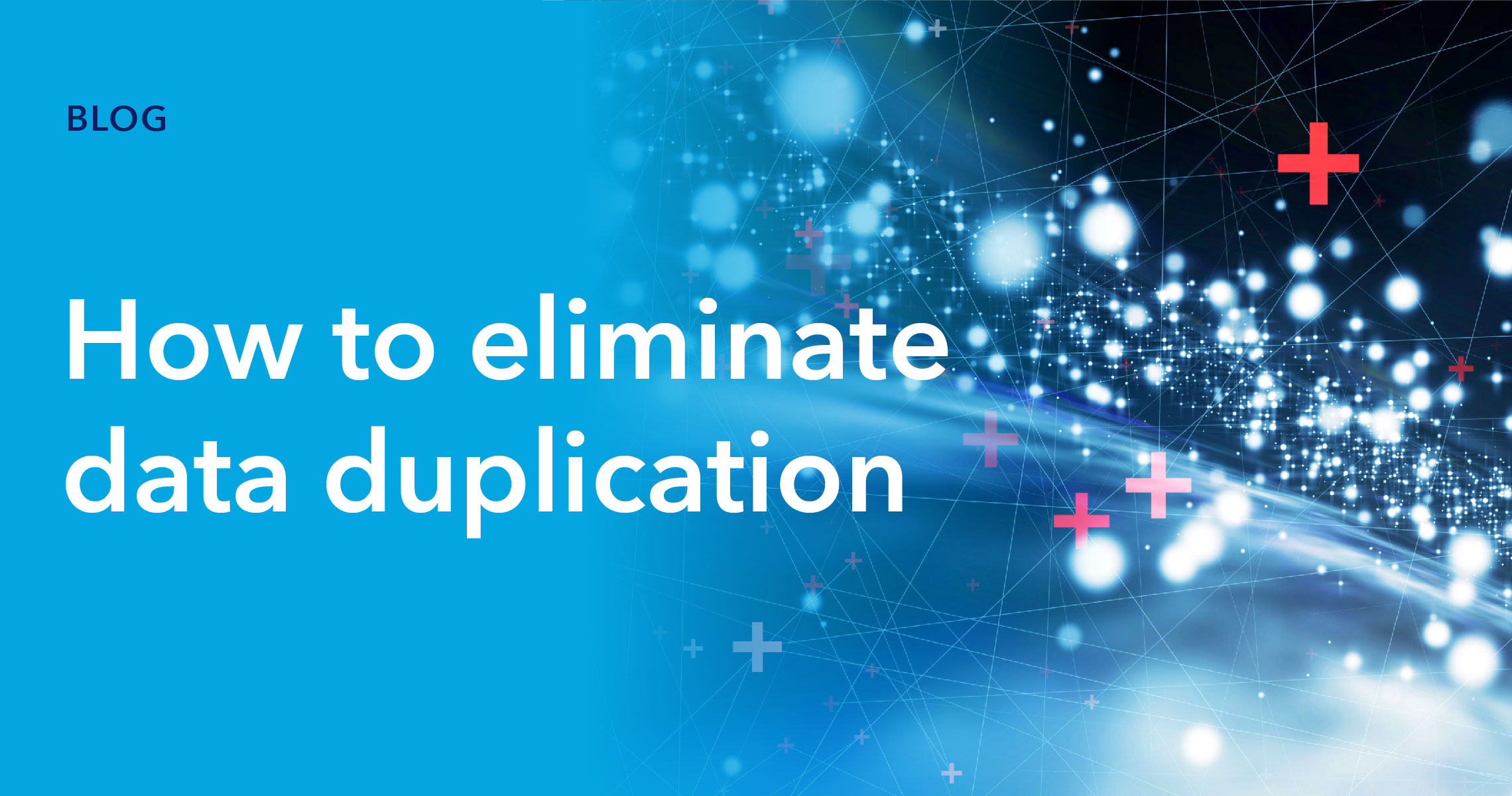All data functions, especially those stuck in data swamps, need to be wary of data duplication and take active steps to eliminate it. Data duplication occurs when the same information is recorded in different files or in separate instances in the same file. Naturally, this creates a number of business issues, including:
-
Increased storage costs: Data duplication creates unnecessary data, meaning that your organization is paying to host the same data twice or multiple times.
-
Wasted resources: The impact of data duplication on a company’s resources is clear from the time and effort spent correcting issues. However, it also has effects throughout the business, such as the creation of duplicate customer records and subsequent duplicate sales calls.
-
Slowing down of data processes: Duplicate data needs to be filtered and unified before accurate analysis can be performed. This involves the creation of special schemas and code to allow for automatic deduplication, or manually sifting through data to locate and unify duplicate assets. All of these processes add considerable time to data processing and analysis.
-
Lower quality insight: The insight derived from analyzing duplicate data isn’t as accurate as it could be. Think of two duplicate customer profiles: one for a ZZTec and another for ZZTec SA (their German subsidiary). Even if it’s only ever the German arm that orders products, incorrect inputting or the collection of crossover data can eventually lead to issues such as overestimating the number of clients interested in a certain product or not assigning enough German-speaking support resources to a product.
-
Missed opportunities: The reason data functions aim for fast business insight is that many opportunities are time-bound, meaning the analysis is less valuable the longer it takes. As an opportunity cost, the impact of slow and poor insight due to data duplication doesn’t show on balance sheets like storage costs do, but it does have a significant effect on a company’s ROI.
Since it impacts an organization’s data function and its bottom line, data duplication is a situation that needs to be identified, understood, and actively planned against. The first step is recognizing how it can happen in the first place.
How data duplication occurs
There are a number of reasons for data duplication, generally stemming from lack of pre-planning and not constructing data architecture that can scale. However, there are other factors at play that need to be noted. Identifying the major causes of data duplication helps an organization plan for a cleaner data future and work on eliminating any duplicate data swamps that currently affect their data functions.
Inefficient data architecture
When a data function is first developed, the rules around data collection, such as formats, desired data, and storage can vary from team to team. As data collection grows, so do disparities in where and how data is stored, how long it is kept, and how it is unified. Poorly planned initial data architecture leads to the multiplication of data duplication problems over time.
Multiple data collection points
The more sources from which an organization collects data, the higher the chance of duplication. For example, a multinational antivirus software company may run multiple marketing campaigns in different jurisdictions that aim to gather data on potential leads for a corporate product. However, these actions will overlap, though not always precisely, with the day-to-day work of their marketing teams, similar campaigns run by other offices, and the contact network of their sales function.
Integrating legacy or acquired data systems
Previously siloed data within the organization or the integration of systems after M&A activity creates situations where duplicate data is brought together in the same location. The main challenge for data functions here is identifying what data duplication is occurring and applying an appropriate schema before any data migration takes place. This way, filtering happens simultaneously.
Lack of metadata repositories
Metadata, or data that provides basic information for cataloguing and identifying data, isn’t always used or maintained in a uniform way. Without this metadata, it is much more difficult to identify data duplication that has already occurred without accessing the assets themselves.
How to avoid data duplication
Data duplication mostly happens through a lack of planning rather than any direct intention, so eliminating it or engaging in “deduplication” requires design and forethought. Removing duplicates after they have been created is a costly and time-consuming exercise. Below are some methods for ensuring data duplication either doesn’t occur in the first place or doesn’t have a significant negative impact on your business.
Better data governance
Strong data governance protocols are essential for establishing a high-performing data function and are also effective in reducing data duplication. Implementing clear guidance on data collection and storage policies, such as on appropriate formatting or schemas, allows an organization to scale without replicating the mistakes that caused data duplication in the past.
Deploying data virtualization
Data virtualization creates a secure virtual version of data so it can be analyzed without having to be moved or copied from its storage location. The process of creating this virtual data layer removes the negative impacts of data duplication by standardizing all the data to enable better analysis. Data virtualization also allows for reduced storage costs for all data, as it is location-agnostic, thus allowing the usage of cheaper storage options.
Leveraging metadata
Though often overlooked, metadata can be an extremely useful tool in the identification and remediation of data duplication. Metadata makes it easier to quickly locate and classify data records, so data functions can track what duplicates have been made in order to mark them for cleaning, as well as identify where new duplications are arising from.
Data virtualization is key
Data duplication is a serious issue for organizations. It slows down their data functions, costs money in terms of resources and storage, and reduces the quality of business insight gained from their data. Tackling the issue means stopping the problem at its source through better data architecture and clear governance policies. However, organizations can overcome the issues of extant data duplication – especially in terms of legacy systems – through data virtualization.
Intertrust Platform is a data virtualization solution that is already helping businesses across the world overcome the obstacles presented by data duplication. To find out more about how Intertrust Platform can improve analysis and insight velocity while reducing cost, read more here or talk to our team.
About Abhishek Prabhakar
Abhishek Prabhakar is a Senior Manager ( Marketing Strategy and Product Planning ) at Intertrust Technologies Corporation, and is primarily involved in the global product marketing and planning function for The Intertrust Platform. He has extensive experience in the field of new age enterprise transformation technologies and is actively involved in market research and strategic partnerships in the field.




